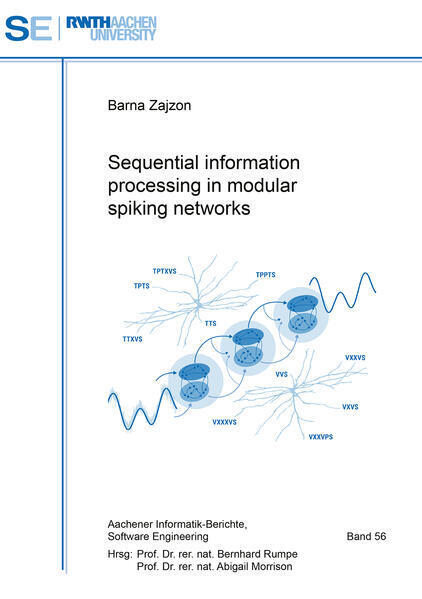Bitte haben Sie einen Moment Geduld, wir legen Ihr Produkt in den Warenkorb.
| Reihe | Aachener Informatik Berichte Software Engineering |
|---|---|
| ISBN | 9783844099577 |
| Sprache | Englisch |
| Erscheinungsdatum | 29.04.2025 |
| Genre | Informatik, EDV/Datenkommunikation, Netzwerke |
| Verlag | Shaker |
| Lieferzeit | Lieferung in 7-14 Werktagen |
| Herstellerangaben | Anzeigen Shaker Verlag GmbH Am Langen Graben 15a | DE-52353 Düren info@shaker.de |
- ✔ kostenlose Lieferung innerhalb Österreichs ab € 35,–
- ✔ über 1,5 Mio. Bücher, DVDs & CDs im Angebot
- ✔ alle FALTER-Produkte und Abos, nur hier!
- ✔ hohe Sicherheit durch SSL-Verschlüsselung (RSA 4096 bit)
- ✔ keine Weitergabe personenbezogener Daten an Dritte
- ✔ als 100% österreichisches Unternehmen liefern wir innerhalb Österreichs mit der Österreichischen Post
Molded by evolutionary processes to cope with statistical regularities in the world, cortical circuits must create robust representations from noisy environments and handle spatio-temporal structures on multiple scales. These processes emerge from complex neuronal interactions within a hierarchical and modular architecture, but the precise underlying mechanisms remain largely unknown. This work approaches the problem from two complementary angles: identifying functional roles of fundamental organizing principles (bottom-up) and dissecting biophysically plausible models of sequence processing (top-down). Using software tools, simulations, and theoretical analysis, it explores how modular structures support efficient and reliable learning and processing of sequential information. The first part examines state representations in modular spiking networks, analyzing architectural and dynamical constraints that influence information retention, transfer, and integration in the presence of noise. It explores the novel hypothesis that modular topographic maps, a pervasive anatomical feature of the cortex, may act as a structural scaffold for sequential denoising of stimulus representations. Modeling and network theory reveal that the sharpness of topographic projections acts as a bifurcation parameter, shaping macroscopic dynamics and representational precision. The second part proposes a conceptual and practical, theoretically-grounded framework for benchmarking and comparison of biophysical models of sequence learning, with a focus on accessibility and reproducibility. Through a meta-analysis, it provides a critical evaluation of current models and synthesizes their insights into a set of functional and neurobiological features that can guide future research.
| Reihe | Aachener Informatik Berichte Software Engineering |
|---|---|
| ISBN | 9783844099577 |
| Sprache | Englisch |
| Erscheinungsdatum | 29.04.2025 |
| Genre | Informatik, EDV/Datenkommunikation, Netzwerke |
| Verlag | Shaker |
| Lieferzeit | Lieferung in 7-14 Werktagen |
| Herstellerangaben | Anzeigen Shaker Verlag GmbH Am Langen Graben 15a | DE-52353 Düren info@shaker.de |
- ✔ kostenlose Lieferung innerhalb Österreichs ab € 35,–
- ✔ über 1,5 Mio. Bücher, DVDs & CDs im Angebot
- ✔ alle FALTER-Produkte und Abos, nur hier!
- ✔ hohe Sicherheit durch SSL-Verschlüsselung (RSA 4096 bit)
- ✔ keine Weitergabe personenbezogener Daten an Dritte
- ✔ als 100% österreichisches Unternehmen liefern wir innerhalb Österreichs mit der Österreichischen Post
Wie gefällt Ihnen unser Shop?



